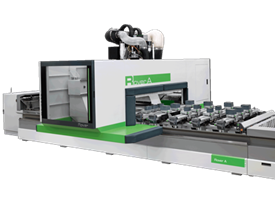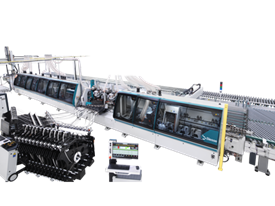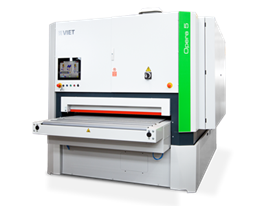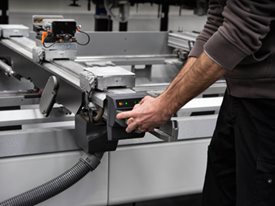Manufacturing organizations in today's competitive business environment confront the ongoing struggle of cutting manufacturing costs.
Manufacturing organizations in today's competitive business environment confront the ongoing struggle of cutting manufacturing costs and retaining profitability despite intense competition. The capacity for efficient cost management in manufacturing is very necessary to ensure +long-term success and continued existence in this business. Manufacturing businesses have a responsibility to proactively seek out creative solutions in order to cut their production costs and maximize their revenues as the global economy becomes more integrated and cost concerned.
They must strike a careful balance between cutting costs and maintaining high-quality goods in an environment of continuously changing customer and market expectations. Companies may increase their profitability and their capacity to spend on R&D, grow their business, and promote innovation by proactively controlling their manufacturing expenses. Businesses that want to succeed in a competitive and dynamic market must apply efficient cost-saving strategies both practically and strategically.
This blog's objective is to provide insightful information and actionable strategies that manufacturing businesses can put into practice to increase their profitability while simultaneously lowering their overall production costs. Companies have the opportunity to improve their overall financial performance, acquire a competitive advantage, and optimize resource allocation when they put these techniques for reducing costs into action.
Importance of Cost Reduction in Manufacturing
In defining a company's competitiveness and financial success, manufacturing costs are crucial. Manufacturing businesses may make educated choices that promote sustainable development by realizing the value of cost reduction.
First of all, increased profitability is a result of good cost reduction measures. Companies may expand their profit margins and reinvest the extra money into other areas of their company by discovering and putting into practice strategies to lower production costs. These funds may be used for research and development to innovate more ways to reduce production cost. Furthermore, increased profitability offers the financial security required to withstand market swings and make investments in long-term development projects.
Second, cost reduction helps businesses more effectively deploy resources. Companies may allocate resources towards actions that add value to the company by identifying areas of excess or waste within the production process. This entails making investments in cutting-edge machinery and technology to boost operational effectiveness, streamlining the supply chain to cut down on lead times and inventory carrying costs, and improving staff development initiatives. Effective resource management increases output while reducing wasteful spending, eventually improving the bottom line.
Last but not least, low cost production enables manufacturing firms to provide competitive pricing and maintain client happiness. Customers are becoming more price conscious and have access to a broad selection of options in today's fiercely competitive industry. Companies may provide their goods at competitive rates without sacrificing quality by lowering their production expenses. This increases client loyalty and long-term profitability by drawing in new consumers while also assisting in the retention of current ones.
So, in today's competitive market, cost reduction initiatives are essential for the long term profitability of manufacturing enterprises. Companies that know how to reduce production costs in manufacturing will be able to increase profitability, distribute resources effectively, provide competitive pricing, and eventually position themselves as industry leaders.
Steps to Reduce Manufacturing Costs and Boost Profits
Implementing certain actions and methods is crucial to lowering manufacturing costs and increasing revenues. Manufacturing firms can cut costs significantly while enhancing their overall financial performance by concentrating on certain areas. Here we will discuss how to reduce the cost of production and increase revenue:
Streamline Supply Chain Management: Cost savings depend on effective supply chain management. Manufacturers may lower carrying costs, minimize waste, and boost overall operational efficiency by optimizing inventory levels, and negotiating contracts with suppliers.
Adopt Lean Manufacturing Principles: Lean manufacturing practices may have a big influence on cost cutting. This strategy puts an emphasis on reducing waste and improving quality. Manufacturers may simplify operations and save wasteful costs by putting practices like value stream mapping, continuous improvement, and standardized work procedures into practice.
Invest in Technology and Automation: Using automation and technology effectively may result in significant cost reductions. Automated production lines may increase output, lower labor costs, eliminate mistakes, and boost overall effectiveness. Advanced analytics and data-driven decision-making technologies may also be used to enhance operations, pinpoint problem areas, and save downtime.
Optimize Energy Consumption: An important element of production costs is energy. Manufacturers may considerably decrease energy consumption and operating costs by implementing energy efficient practices. These can be utilizing energy efficient equipment, improving lighting systems, and using renewable energy sources.
Waste Reduction: The production cost per unit can be reduced by putting an emphasis on waste reduction. Lean manufacturing techniques, such as the 5S approach (sort, put in order, shine, standardize, and sustain), may help find and get rid of waste at every stage of the production process. Manufacturers may lower material prices, lower scrap rates, and improve operational efficiency by decreasing waste.
Boost Employee Productivity: Cutting costs requires maximizing employee productivity. Employees' abilities may be improved, their efficiency can be increased, and mistakes can be decreased by offering them training and development opportunities. A culture of continual innovation and development may also be developed by rewarding workers who find and use cost-saving strategies.
Conclusion
Finally, in the current fiercely competitive market, manufacturing organizations must focus on how to reduce the cost of production and increase profits. Companies may optimize their manufacturing costs by adopting these techniques.
Manufacturing businesses may save a lot of money while preserving the quality of their products and customer satisfaction by taking a proper approach to cost reduction. These cost saving ideas in manufacturing not only increase profitability but also give businesses an edge over rivals in a budget-conscious market.
Keep in mind that cutting costs is a continual process that calls for constant review, creativity, and adaptation. Manufacturing businesses may assure sustainable growth and success in a continuously changing market by continually looking for ways to improve and putting efficient practices into place. Manufacturing businesses may succeed in today's competitive market environment by committing to cost reduction and profitability.



.png)





 Worldwide
Worldwide
 Italia
Italia
 United Kingdom
United Kingdom
 Россия
Россия
 France
France
 中国
中国
 Asia
Asia
 Deutschland
Deutschland
 España
España
 Schweiz
Schweiz
 North America
North America
 India
India
 Australia & New Zealand
Australia & New Zealand
 Türkiye Cumhuriyeti
Türkiye Cumhuriyeti
 Middle East
Middle East
 Brasil
Brasil